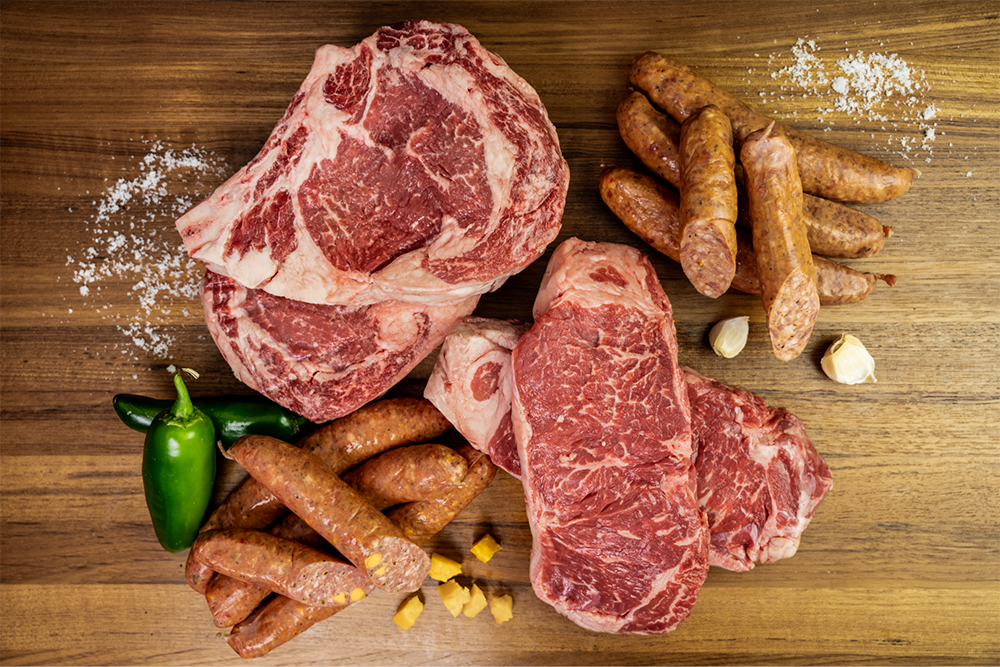Visit Bagley Farms Meat Market Edwardsville IL for Farm-Fresh Meat and Specialty Cuts
Discover the Art of the Butcher's Cut in a Modern Meat Market
In the ever-evolving landscape of modern meat markets, the butcher's cut has actually transcended its traditional roots, combining age-old workmanship with modern methods. What genuinely sets the modern-day butcher apart is their ability to create a deeper connection between consumers and the origins of their meat.
Evolution of Butchery Techniques
The development of butchery strategies mirrors an abundant tapestry of advancement and adaptation driven by innovations in technology, changes in customer demand, and a deeper understanding of meat science. Historically, butchery was a craft passed down via generations, with techniques honed over centuries to optimize return and taste. The industrial transformation ushered in automation, transforming standard practices and enabling large processing.
The mid-20th century saw butchery methods better improved by clinical understandings right into muscle mass biology and meat aging, enhancing both inflammation and preference. Innovations like vacuum product packaging and refrigeration expanded product shelf-life, allowing butchers to expand offerings and improve high quality control. This duration additionally noted the increase of specialized equipment, such as band saws and meat slicers, which increased accuracy and effectiveness in meat handling.

Digital systems currently help in monitoring animal provenance and maximizing cuts to meet particular consumer choices. In addition, a renewal in artisanal butchery has emerged, blending traditional skills with modern understanding to provide to customers seeking ethical and lasting meat choices.
Recognizing Meat Cuts
Understanding the ins and outs of meat cuts is necessary for both butchers and customers looking for high quality and worth. For butchers, exact cuts reflect skill and regard for the craft, making certain very little waste and optimum return.

Understanding muscle mass structure is crucial; muscles used much more frequently by the animal have a tendency to be harder and are best matched for slow-moving cooking methods, while less-used muscles, like those discovered in the loin, are extra tender and perfect for grilling or roasting. Experience with these distinctions encourages consumers to make informed choices, enhancing their cooking endeavors.
Choosing High Quality Meat
Choosing the ideal meat includes more than simply picking a visually attractive item from the display screen. The art of selecting high quality meat requires a critical eye and knowledge of certain characteristics that signify quality and quality.
Secondly, think about the marbling, which refers to the white flecks of fat within the muscular tissue. Correct marbling is an essential indication of tenderness and taste, as it melts throughout cooking, enhancing the meat's juiciness. Bear in mind, greater marbling commonly correlates with superior quality cuts, such as USDA Prime.
Structure is one more crucial element; meat ought to really feel strong to the touch, not slimed or extremely soft. Furthermore, bear in mind the scent. Fresh meat ought to have a clean, neutral smell, without any kind of sour or repulsive odors.
Combining Cuts With Cooking Techniques

Conversely, harder cuts like brisket and chuck roast are rich in collagen, which damages down into gelatin when prepared slowly. These cuts are perfect for braising or slow-moving roasting, allowing the meat to soften gradually and develop deep, complex tastes. Likewise, cuts such as short ribs and pork shoulder prosper with Get More Info slow-cooking techniques, where extended cooking times transform their durable appearances into delicious dishes.
Lamb shanks and oxtail, which call for long term food preparation to soften, are excellent prospects for cooking or sluggish simmering. These techniques coax out abundant, hearty flavors while preserving wetness. By comprehending the distinct attributes of each cut, chefs and home cooks alike can elevate their culinary creations, guaranteeing each dish is both satisfying and memorable.
The Butcher's Duty Today
Browsing the developing landscape of the modern-day meat market, the butcher's function today extends past simple preparation of cuts. Contemporary butchers are cooking artisans, instructors, and advocates for lasting methods. They bridge the void between the ranch and the fork by making sure ethical sourcing, recognizing animal husbandry, and focusing on transparency in the supply chain. This change shows the expanding customer need for high quality over quantity, where provenance and pet welfare are extremely important.
Along with crafting accurate cuts, butchers currently engage straight with customers, supplying cooking guidance and customizing selections to fit individual requirements and choices. Their expertise in meat aging, marbling, and taste a knockout post accounts equips customers to make enlightened decisions, boosting their culinary experiences. This customized solution exemplifies the butcher's advancing function as a trusted consultant in the kitchen.
Additionally, butchers are pivotal in reducing waste, utilizing entire pets to develop diverse products such as sausages and stocks. This comprehensive approach not only values the pet yet likewise lines up with contemporary sustainability objectives. By doing this, the modern-day butcher symbolizes both tradition and advancement, adapting to an ever-changing market while maintaining the virtuosity and integrity of their craft.
Conclusion
Mastery in understanding varied meat cuts and high quality signs empowers butchers to give educated suggestions, aligning details cuts with ideal cooking approaches. By recognizing historical techniques while accepting contemporary needs, the butcher's function remains essential in today's advanced meat market.